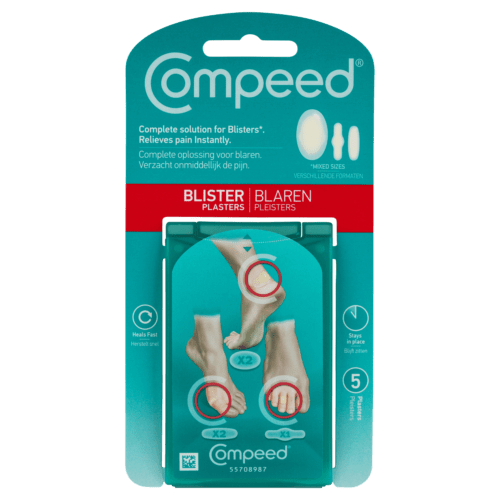Home » Latest Technological Innovations in Blister Pack Design and Production
Latest Technological Innovations in Blister Pack Design and Production

Blister packaging plays an indispensable role in various sectors, especially in the pharmaceutical, food, and consumer goods industries. It provides a user-friendly and secure mode of packaging, keeping products safe from contamination and damage. Over the years, technological advancements have greatly transformed the way blister packs are designed and produced, paving the way for increased efficiency, improved product preservation, and superior end-user experience.
This blog will delve into the latest technological innovations in blister pack design and production.
Personalized and Smart Packaging
Customization and personalization are not just trends, but are becoming the norm in today’s competitive market. To meet this growing demand, blister pack producers are turning to advanced design software and production equipment that enable them to create tailor-made packaging solutions. For instance, 3D printing technology is increasingly used for prototyping personalized blister packs. This approach reduces the design-to-production time, as well as costs associated with traditional prototyping methods.
In addition to personalization, smart packaging is also on the rise. It integrates various technologies such as RFID (Radio Frequency Identification) tags, QR codes, and NFC (Near Field Communication) chips to provide value-added features such as product tracking, authentication, and consumer engagement.
Sustainable Packaging Innovations
Given the growing awareness and regulations related to environmental protection, sustainability is becoming a key consideration in blister pack design. Several innovative technologies are being implemented to minimize the environmental impact of blister packaging.
One of the most promising innovations is the development of biodegradable and compostable materials. For example, many companies are experimenting with plant-based polymers like PLA (Polylactic Acid), a renewable and compostable alternative to petroleum-based plastics. Additionally, the concept of mono-material blister packs is gaining traction, facilitating easier recycling by eliminating the need to separate different materials.
Automation and Robotics in Production
Automation and robotics have significantly enhanced the efficiency and accuracy of blister pack production. High-speed, automated blister packaging machines are becoming standard in the industry, capable of producing thousands of packs per hour with precision and consistency. These machines come with features such as automatic filling, sealing, and cutting.
In addition, robotic systems are increasingly used in blister pack production lines for tasks such as loading and unloading, inspecting the quality of packs, and sorting and palletizing the finished products. These advancements not only improve productivity but also reduce the risk of human errors and enhance workplace safety.
Advanced Sensing and Inspection Systems
Quality assurance is crucial in blister pack production, especially in sensitive sectors like pharmaceuticals. Thanks to technological advancements, modern blister packaging machines are equipped with advanced sensing and inspection systems. These systems use machine vision technology, infrared, and ultrasonic sensors to detect any defects or inconsistencies in real-time, ensuring every pack leaving the production line meets the highest standards of quality and safety.
Digitalization and Industry 4.0
The blister pack production industry is embracing digitalization and the principles of Industry 4.0. Technologies such as the Internet of Things (IoT), Big Data, and cloud computing are increasingly being used to collect and analyze data from production lines. This data-driven approach enables predictive maintenance, reduces downtime, and optimizes the overall production process.
Furthermore, the use of digital twins – virtual replicas of physical systems – allows manufacturers to simulate and optimize their production processes before implementing them in the real world. This results in more efficient production, reduced waste, and quicker troubleshooting.
Interested in blister packaging, then partner with Brown Packaging today to get started.
Why Co-Packaging Becomes Critical During the Holidays As the holiday season approaches, packaging teams are under pressure to deliver high volumes of promotional sets, combo
Holiday demand starts long before December. So should your packaging. For B2B and D2C brands alike, Q4 is the most critical—and most chaotic—shipping window of
The Challenge of Multi-SKU Holiday Programs During the holiday season, brands often shift from selling single products to curated sets, bundled assortments, and promotional kits—each
Rigid boxes are the gold standard of premium packaging. Whether used for cosmetics, electronics, fashion, or high-end subscription kits, rigid boxes do more than protect
Understanding One-Piece FOL and Three-Piece Bike Shipping Boxes Choosing the right box style is essential when shipping bicycles—especially for brands, manufacturers, and distributors focused on
Corrugated boxes are essential to shipping, retail, and e-commerce—but when you introduce custom printing, the stakes (and the opportunities) rise. Print isn’t just about looks—it’s
Home » Latest Technological Innovations in Blister Pack Design and Production
In the current competitive retail landscape, the packaging of a product plays an increasingly significant role in customer decision-making. Brands are progressively realizing the power
The visual appeal of a product often determines its success in the market. In today’s competitive retail environment, innovative packaging designs have become a crucial
With the rise in accidental medication ingestions by children each year, it has become increasingly important to implement child-resistant packaging. Among various packaging solutions, child-resistant